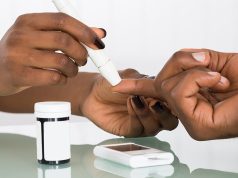In patients with diabetes, baPWV can predict all-cause mortality after lower extremity amputation
THURSDAY, July 28, 2016 (HealthDay News) — Brachial-ankle pulse wave velocity (baPWV) can predict all-cause mortality in patients with diabetes after first non-traumatic lower extremity amputation (LEA), according to a study published online July 16 in the Journal of Diabetes Investigation.
Kazuki Ikura, M.D., from the Tokyo Women’s Medical University School of Medicine, and colleagues conducted an observational historical cohort study of 102 Japanese patients with diabetes after a first non-traumatic LEA.
The researchers found that during a mean follow-up period of 3.3 years, 44 patients reached the end point of all-cause mortality. baPWV was a significant predictor for all-cause mortality in univariate and multivariate analyses (hazard ratios, 1.05 and 1.04, respectively; both P < 0.01); ankle-brachial pressure index (ABI) was not a significant predictor for all-cause mortality. The results were similar when baPWV and ABI were analyzed as categorical variables.
“In conclusion, the present study may provide evidence that baPWV is a useful clinical predictor for all-cause mortality in patients with diabetes after first non-traumatic LEA,” the authors write. “This finding should be confirmed in prospective studies with a larger sample size and a multi-center design.”
Copyright © 2016 HealthDay. All rights reserved.








